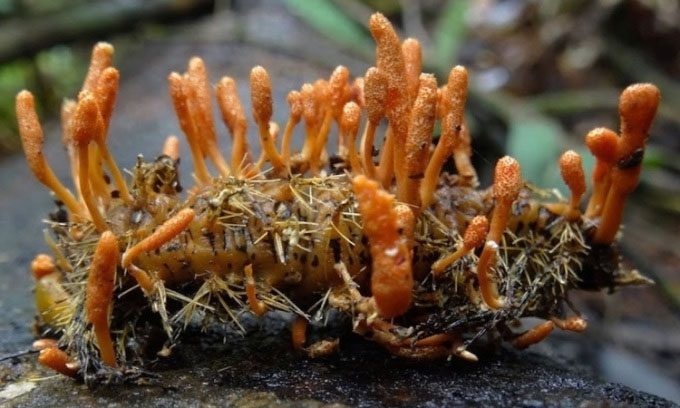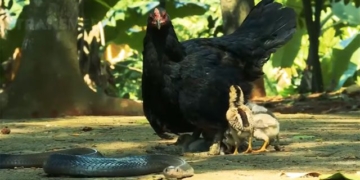South Korean researchers have discovered that Cordyceps sinensis cultivated on certain insect species grows robustly with a high concentration of bioactive compounds.
Cordyceps is extremely rare in nature, and until now, cultivating healthy specimens in the laboratory has remained a challenge. However, Professor Mi Kyeong Lee at Chungbuk National University and his team, including Dr. Ayman Turk, have found a way to cultivate Cordyceps in a controlled environment without compromising their efficacy. They published their findings in the journal Frontiers in Microbiology on October 19.

Cordyceps is extremely rare in nature.
Cordyceps fungi are well-known for their parasitic properties. Their spores attach to insects, killing them and growing fruiting bodies from the host’s tissue, resulting in the formation of Cordyceps. This parasitic form has significant potential in medicine, containing the bioactive compound cordycepin, which can be used to develop antiviral drugs and potent cancer treatments.
Cordyceps is typically cultivated in laboratories on brown rice. However, scientists have observed that the cordycepin content is very low, and the protein content in rice is insufficient to support the fungi. Due to the strong efficacy of cordycepin, Lee’s team sought ways to cultivate healthy Cordyceps in the lab and synthesize bioactive compounds for medical research. They considered using edible insect species as a growth medium for Cordyceps, but different insects provide varying nutrients.
Using crickets, silkworm pupae, mealworms, grasshoppers, white-spotted flower beetle larvae, and scarab beetles, the researchers cultivated Cordyceps for two months and then harvested them to analyze the results. They found significant differences between the insect feed. Cordyceps grew largest on mealworms and silkworm pupae, while growth was poorest on beetle larvae and grasshoppers. However, maximum growth size did not correlate with high cordycepin levels. Despite not growing large, Cordyceps cultivated on Y-shaped scarab beetles produced the highest amount of cordycepin, over 34 times the amount obtained from silkworm pupae. Additionally, Cordyceps grown on edible insects contained more than 100 times the cordycepin compared to those grown on brown rice, according to Lee.
The study indicates that the key to producing cordycepin lies in the fat content of the insects, not the protein. Specifically, a high level of oleic acid is essential for synthesizing cordycepin. Adding oleic acid to insects with low yields increased cordycepin production in Cordyceps by 50%. “Our research demonstrates a method to enhance cordycepin production in Cordyceps by using insects with high oleic acid content,” Lee stated. The research results bring hope to experts seeking new drugs for disease treatment.



















































